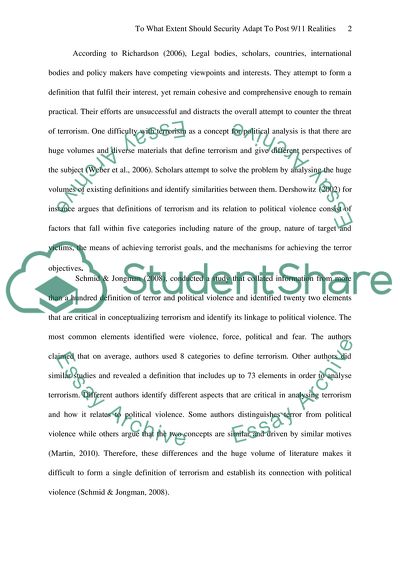Cite this document
(To What Extent Should Security Adapt To Post 9/11 Realities Coursework Example | Topics and Well Written Essays - 2250 words, n.d.)
To What Extent Should Security Adapt To Post 9/11 Realities Coursework Example | Topics and Well Written Essays - 2250 words. https://studentshare.org/politics/1876718-to-what-extent-should-security-adapt-to-post-911-realities
To What Extent Should Security Adapt To Post 9/11 Realities Coursework Example | Topics and Well Written Essays - 2250 words. https://studentshare.org/politics/1876718-to-what-extent-should-security-adapt-to-post-911-realities
(To What Extent Should Security Adapt To Post 9/11 Realities Coursework Example | Topics and Well Written Essays - 2250 Words)
To What Extent Should Security Adapt To Post 9/11 Realities Coursework Example | Topics and Well Written Essays - 2250 Words. https://studentshare.org/politics/1876718-to-what-extent-should-security-adapt-to-post-911-realities.
To What Extent Should Security Adapt To Post 9/11 Realities Coursework Example | Topics and Well Written Essays - 2250 Words. https://studentshare.org/politics/1876718-to-what-extent-should-security-adapt-to-post-911-realities.
“To What Extent Should Security Adapt To Post 9/11 Realities Coursework Example | Topics and Well Written Essays - 2250 Words”. https://studentshare.org/politics/1876718-to-what-extent-should-security-adapt-to-post-911-realities.


